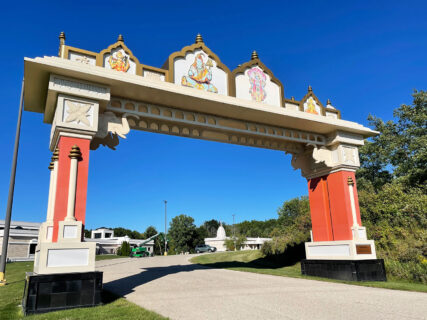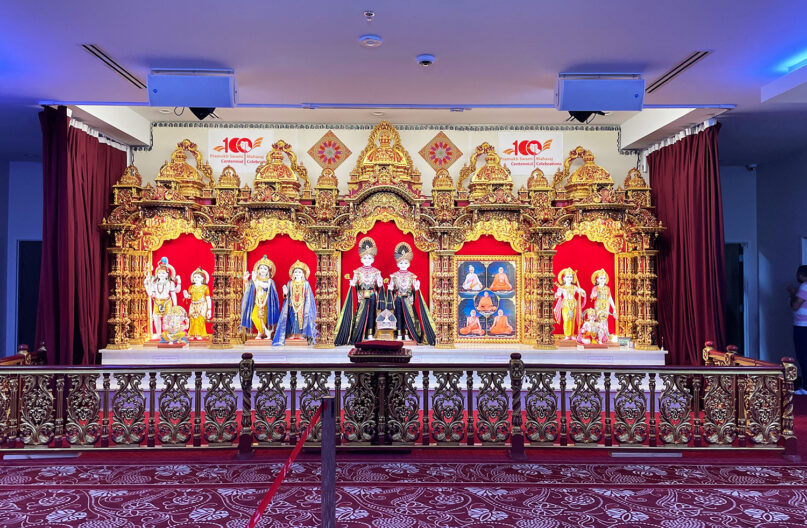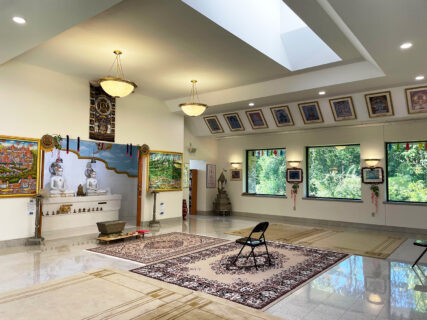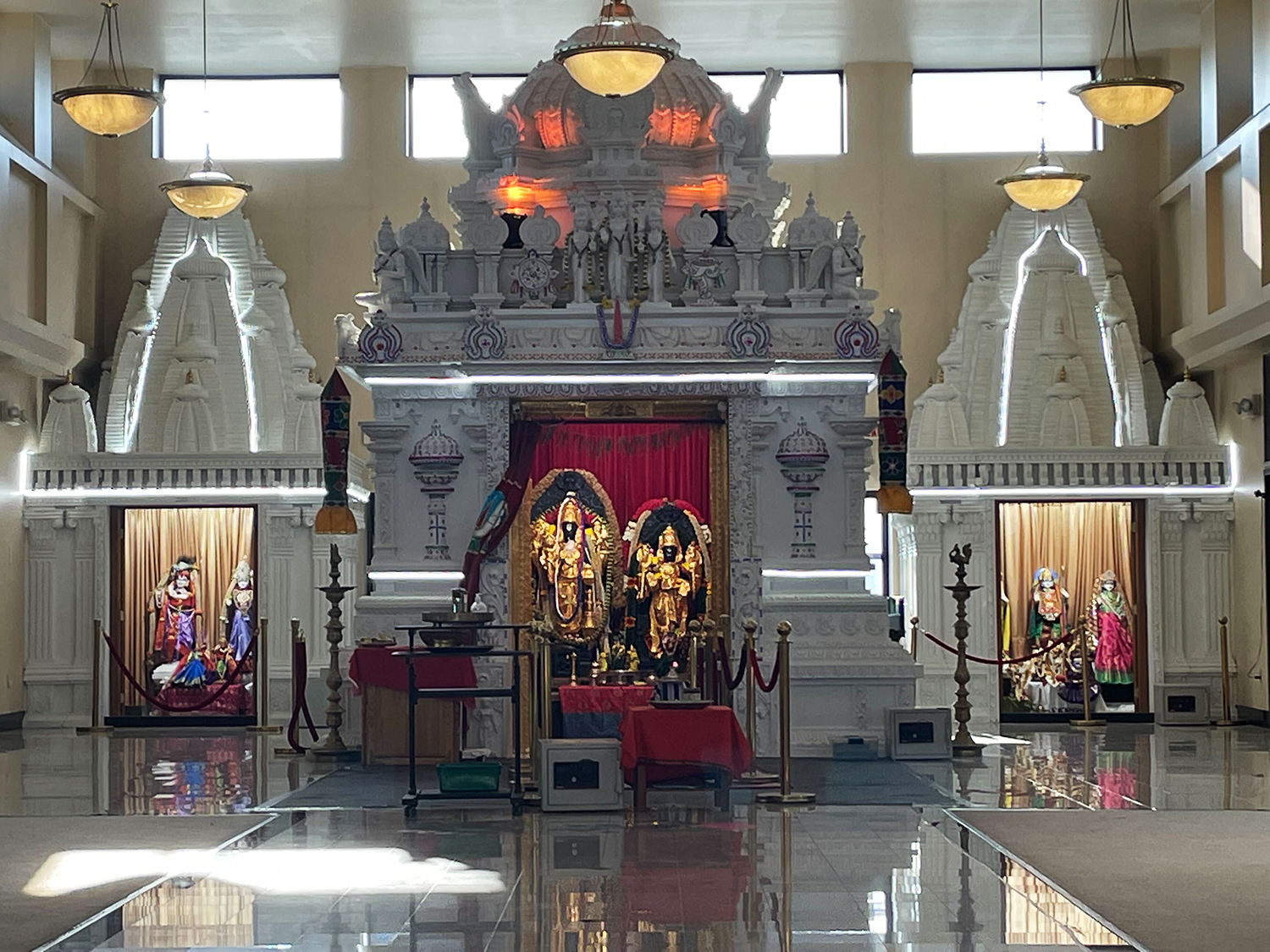(RNS) — Tucked away on a hill beyond a vast commercial landscape are the first two Dharmic temples to exist in the Midwestern state of Wisconsin.
The 22 acres that are home to the Hindu and Jain Temples of Wisconsin were situated in “the middle of nowhere” when they were built in 2001, according to Sarvesh Geddam, the secretary of the two congregations. Now, the area is laden with fast-food restaurants and surplus warehouses, and Pewaukee, a village next to Waukesha in Milwaukee’s far-west suburbs, has become home to two more groups: devotees of Shirdi Sai Baba, a 20th-century Hindu saint, and BAPS, or Bochasanwasi Akshar Purushottam Swaminarayan Sanstha, a larger Hindu denomination that follows gurus, or swamis, and is often recognizable for its grand temples.
When the Hindu and Jain temples were finished 20 years ago, the community was decidedly unmarked by South Asian culture. Even today, outsiders might wonder that the Wisconsin suburbs — and a state known predominantly for its freezing temperatures (as well as its dairy farming and its importance in national elections) — would draw people from the homelands of Hinduism and Jainism.
In fact, the Indian population of Wisconsin is the second-largest minority Asian group after the Hmong and has grown in population by more than 80% since 2000-2010, according to Wisconsin’s Asian American and Pacific Islander Health Forum.
The midwest offered the members of the four temples what it has offered any immigrant: space to call their own.
Of the nearly 2 million Indians in the United States today, more than half identify as Hindu. The earliest immigrants to arrive worshipped at makeshift shrines in people’s homes, but with the expansion of immigration quotas from Asian countries in 1965, more than 1,450 temples now exist in the U.S. In New Jersey, California and Texas, where the majority of South Asian Americans live, there are enough adherents to populate temples dedicated to particular deities, as is common in India.
Although Jainism also contains multiple sects within it, the JAINA society now has more than 80 Jain centers nationwide and an estimated population of 30,000 worshippers.
“This is a pan-Indian umbrella,” said Geddam. “We are helping people who are struggling to cope with the change of coming here.” When the first worshippers came to the temple, said Geddam, they felt grateful and amazed to find a slice of home.
To cater to the nearly 1,000 Wisconsinites who attend the Pewaukee Hindu temple, the building was built to accommodate what Geddam calls an “arcade” of deities — a collection of marble statues depicting the many manifestations of God that Hindus worship, Krishna, Shiva and Ganesh being just the most widely recognized of dozens of forms of the divine known as deities or gods.
The Hindu temple initially offered to host Jain idols as well, but it soon became apparent that different sects had different needs. The Jain holiday Samvatsari and the Hindu one of Ganesh Chaturthi often fall on the same day, for instance. While the Jain holiday is about quiet meditation and reflection, the latter is an event of great jubilation and noise.
As the South Asian community continued to grow, the two other Indic faiths began to meet at the Hindu temple. The Sai Baba devotees and BAPS members used to schedule worship around each other at the Hindu temple, but soon they, too, wanted their own spaces.
In 2013, the Sai Baba devotees walked into a nondenominational church that had come up for sale in downtown Pewaukee and saw a great hall with no benches or pews to remove. The followers of Sai Baba, who also center themselves on serving others, raised $200,000 in just two days from the small surrounding community, many of whom had never stepped foot in an Indian house of worship.
The location, now the Wisconsin Shirdi Sai, has the feeling of visiting Baba’s home temple in Shirdi, India, say its new owners, who claim on their website that it was selected by their founder, Sai Baba himself.
“It was not magic, it was a miracle,” said Satya Karri, the temple’s main trustee. “We were waiting, and with Baba’s grace we got it.”
The BAPS’ Swaminarayan temple got its start in 2018 on the same street as the Hindu and Jain temples in what used to be a mattress warehouse. BAPS temples are nearly uniform wherever they are found, with a store offering Indian snacks and books, classrooms separated by gender and a large assembly hall.
The idea is to create continuity with not only the faith but the culture of western India, where BAPS originated. “When they come here, it gives them a feel of where they grew up,” said Mayur Brahmbatt, the teenage son of the temple’s head priest, about its elder members.
For larger events that cater to a wider audience, like Diwali, the Hindu temple is still the hub. Thousands of Indian Americans, young and old, flock to this little epicenter of Midwestern India.

The ornate entryway into the Hindu and Jain temples located next to each other in Pewaukee, Wisconsin. RNS photo by Richa Karmarkar
The surrounding community, more than 70% Christian and many of them evangelicals, responded with typical midwestern hospitality and practicality, mixed with curiosity. Teachers in the local school district attended seminars at the temple to learn more about their Indian students. The temples have given back to the community as well: In 2020, they hosted clinics that administered 5,000 COVID-19 vaccinations, more than 87% of them to non-Hindus.
“We believe we can attain “moksha” here in this lifetime,” said Geddam, referring to the devotion to service that characterizes Dharmic beliefs.
While the temples have helped anchor new South Asian American families in the U.S., Kamal Shah, president of the Jain Temple, said they also foster hope that basic Jain teachings, like vegetarianism and ahimsa, will pass down to following generations.
“When I first came here, people said, ‘When you come to this country, you can’t continue to be in the old religion,’” said Shah. “Though our belief is very, very ancient, we are able to keep this up in America. That is the biggest transformation.”







